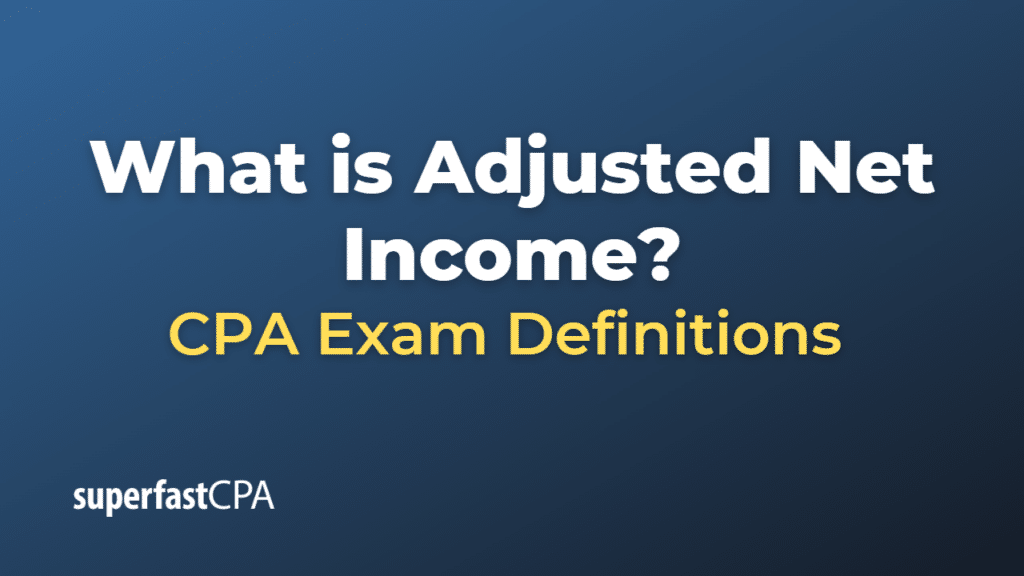Adjusted Net Income
Adjusted net income is a financial metric that reflects a company’s net income after adjusting for non-recurring, non-cash, and extraordinary items. It provides a more accurate representation of the company’s ongoing profitability and financial performance, as it excludes one-time events, accounting adjustments, or unusual transactions that may distort the actual operating results.
Adjustments may include items such as:
- One-time gains or losses, such as the sale of assets or legal settlements
- Non-cash expenses, such as stock-based compensation or depreciation and amortization
- Non-operating income or expenses, such as interest income, interest expense, or foreign currency gains/losses
- Extraordinary items, such as natural disaster-related losses or insurance recoveries
- Tax effects related to the adjustments
By focusing on the company’s core operations, adjusted net income can help investors and analysts evaluate the company’s financial health, sustainability, and growth potential.
However, it’s important to note that adjusted net income is a non-GAAP (Generally Accepted Accounting Principles) financial measure, meaning it does not adhere to standardized accounting rules. As a result, different companies may calculate adjusted net income differently, which can make it challenging to compare across different businesses.
Example of an Adjusted Net Income
Let’s say we have a fictional company called XYZ Corp. Below is the company’s income statement for the year:
- Revenue: $2,000,000
- Cost of goods sold: $1,000,000
- Gross profit: $1,000,000
- Operating expenses: $600,000
- Operating income: $400,000
- Interest expense: $50,000
- Non-operating gain (from the sale of a building): $100,000
- Income before taxes: $450,000
- Taxes (30%): $135,000
- Net income: $315,000
Now, let’s calculate the adjusted net income by removing the non-recurring and non-operating items:
- Start with the net income: $315,000
- Subtract the non-operating gain from the sale of the building: -$100,000
- Add back the interest expense, assuming it is non-operating: +$50,000
- Adjust the taxes: The original tax amount was $135,000 (30% of $450,000). Now, we need to recalculate the taxes based on the adjusted income before taxes ($350,000). The new tax amount is $105,000 (30% of $350,000). The tax adjustment is $135,000 – $105,000 = $30,000. So, add back the tax difference: +$30,000.
Adjusted net income = $315,000 – $100,000 + $50,000 + $30,000 = $295,000
In this example, XYZ Corp’s adjusted net income is $295,000, which is a more accurate representation of its ongoing profitability and financial performance, as it excludes the one-time gain from the sale of a building and adjusts the interest expense and taxes accordingly.













